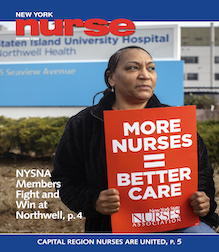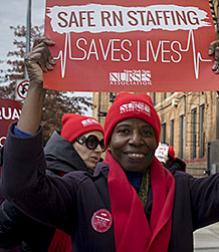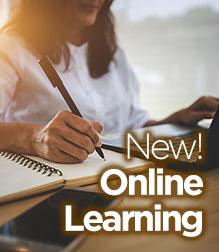
“The complexity of managing a widely diverse range of patients cannot be solved by imposing staffing ratios — greater flexibility is needed.”
- Hospital Association of NY (HANYS) www.hanys.org/news/index.cfm?storyid=117
“Higher patient-to-nurse ratios increase the odds on patient deaths and failure-to-rescue…”
“Effects of nurse staffing and nurse education on patient deaths in hospitals with different nurse work environments.”
- J Nurse Adm, Volume 42
It is impossible to turn to conventional or social media without hearing about “Fake News” or “Alt-Facts” or comments like “You can’t believe anything” or “How do I know that’s true?”
A recent study found that people tend to integrate inaccurate statements into memory because it’s easier than critically analyzing information. The human brain then pulls up the incorrect information first because it’s less work to retrieve recently presented material. “If it’s available, people tend to think they can rely on it. But just because you can remember what someone said, doesn’t make it true.”
(Current Directions in Psychological Science, Volume: 25 issue: 4, page(s): 281-285; August 1, 2016)
According to a Pew Research Center survey conducted in December of 2016, two-thirds of Americans state that fabricated news stories are causing much confusion about current events. However, 84% believe that they themselves, on the other hand, are either somewhat or very confident that they can differentiate fact from fantasy. Meaning: we believe that it’s “those people” who are being duped, “not us.”
Critical thinking
Nurses are told to engage in “critical thinking” when caring for our patients. But that, like “clinical excellence,” is often rhetoric, not based on reality. Nursing practice is being transformed more and more into prescribed protocols, checklists, drop boxes, productivity metrics, time and motion study-based expectations, scripted care, and a life in front of a computer screen. Questioning medical decisions, hospital policies or even making a reassessment that contradicts an earlier one (i.e. critically thinking) is discouraged, if not disparaged.
In schools, on the job and in the information world, we are barraged with directives, admonitions and pressures to conform to a pre-determined social and cultural “norm.” When do we get to engage in stimulating debate, discussion, the sharing of a variety of viewpoints? People with the same views (often because they watch the same news stations or share a common culture) tend to flock together, further robbing us of the ability to listen to alternative thoughts, construct our own individual perspectives, and engage in challenging conversation.
Alienation
The trends towards standardization, whether in education or healthcare, serve to alienate us from our own common sense practices and from one another — our community. Professionals — nurses, doctors, teachers, and others — used to enjoy a degree of autonomy in defining and practicing our arts. Now we are held to parameters meted out by others — often people and institutions that have little knowledge of “the ground,” the world we inhabit.
What’s worse, these “standards” are frequently not built around the essence of our respective professions, but are designed to cater to “the bottom line.” Depending on the funding sources for our areas of work, this means either generating profits for private interests or cutting costs for the public’s interests, or both.
Fear
This combination of alienation from our work, our colleagues and our institutions and the powerlessness we tend to feel as a result allows us to play victim to a world we believe is beyond our control or out of control. It draws us in to smaller circles — with the side effect of narrowing our perspectives — so that we can feel safe. The loss of community and collective embrace disarms us because our real power lies in our common needs (which are over-arching) and our numbers.
The end result of all of this is that we become easy targets for those who are in power to exploit our fears. This is when the country we call “America” and the values we think we are supposed to have as a nation start to unravel. We look for stability, normalcy, a return to a perceived ideal — but we don’t look to ourselves or to each other to provide it. We remain receptacles of a prescription, not players in the game. Thus, we can easily be transformed into game pieces or pawns, unwittingly. Fear, rather than reason, dominates our thinking and can push us into irrational behaviors.
FDR made the famous statement: “We have nothing to fear but fear itself.” By opening our minds to alternative views, by carefully researching a variety of sources, by listening carefully to one another, by believing in ourselves and by embracing our common humanity, we can rise above our fears and work together to not only reclaim our profession but our nation. Given the legislation we are facing that seeks to dismantle unions and dissolve safety regulations, our survival may very well depend on it.




